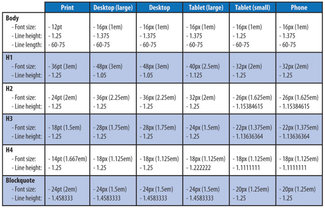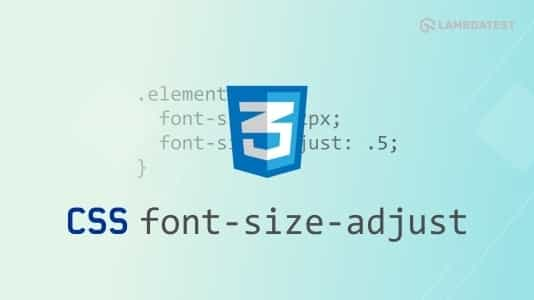

- #Css inherit font size but scale how to
- #Css inherit font size but scale upgrade
- #Css inherit font size but scale series
Next, we define the heading levels that we want to build up our type scale from. For use in a single project, you can skip adding the map entirely and directly assign your chosen ratio decimal value to $type-size-ratio. The CodePen demo shows how the type-ratio() custom Sass function is created to retrieve the ratio value by key. The $type-size-ratio is selecting the perfectFourth ratio from the map previewed earlier, which equals 1.333. $type-size-ratio : type-ratio ( "perfectFourth" ) Select by key of map, or use a custom value There are two variables we'll define to get started: // Recommended starting point Unfamiliar with Sass? It's a preprocessor that gives your CSS superpowers - like variables, array maps, functions, and loops - that compile to regular CSS. The good news is we can use Sass to do the math and output styles dynamically in relation to any supplied ratio 🙌 Stick with me - I don't super enjoy math, either. Generating font-size Using a Selected Ratio # This CSS-Tricks article covers additional properties in-depth if you do find these two properties aren't quite cutting it. More testing may be required for certain types of content where long words are the norm, ex. However, it gracefully falls back to simply no hyphenation in which case overflow-wrap will still help. The hyphens property is still lacking in support, particularly when you may be dealing with multi-language content. Optional, not supported for all languagesĪs of testing for this episode, overflow-wrap: break-word seemed sufficient, whereas looking back on articles over the past few years seem to recommend more properties for the same effect. Help prevent overflow of long words/names/URLs We'll scope these to headings as well as p and li for our baseline: p, This is optional, and you may prefer to scope these properties to component-based styles or create a utility class to more selectively apply this behavior. We can add some future-proof properties to help prevent overflow layout issues due to long words, names, or URLs. Use of em will scale the icon proportionate to the button text without writing custom icon sizes if you have variants in the button size available. One use case is for buttons when sizing an icon relative to the button text. Consider the following example of a list where the font-size is set in em and compounds for the nested lists:īy Stephanie Eckles ( more about units including rem and em in my Guide to CSS Units for Relative SpacingĮm shines when the behavior of spacing relative to the element is the desired effect. One em is equal to the font-size, so by default, this is equal to 1rem.Ĭompared to rem, em can compound from parent to child, causing adverse results. Let's learn the difference.Įm will stay proportionate to the element or nearest ancestor's font-size rule. In addition, the value of rem will not change no matter how deeply it is nested, which is largely what makes it the preferred value for typography sizing.Ī few years ago, you might have started to switch your font-size values to em. Unless a user changes it, or you define it differently with font-size on an html rule, the default rem value is 16px with the advantage of responding to changes in operating system zoom level. Instead, it's recommended that your primary type scale values are set with rem.

It is not ideal due to failure to scale in proportion to the user's default font-size that they may have set as a browser preference or by using zoom.
#Css inherit font size but scale upgrade
The first upgrade is to forget about px when defining typography.
#Css inherit font size but scale how to
If you're looking for type design theory or how to select a font, that's outside the scope of this article. Typography is both foundational to any stylesheet and the quickest way to elevate an otherwise minimal layout from drab to fab. Let's take the mystery out of sizing type.

#Css inherit font size but scale series
This is episode #12 in a series examining modern CSS solutions to problems Stephanie Eckles has been solving over the last 14+ years as a front-end dev.


 0 kommentar(er)
0 kommentar(er)
